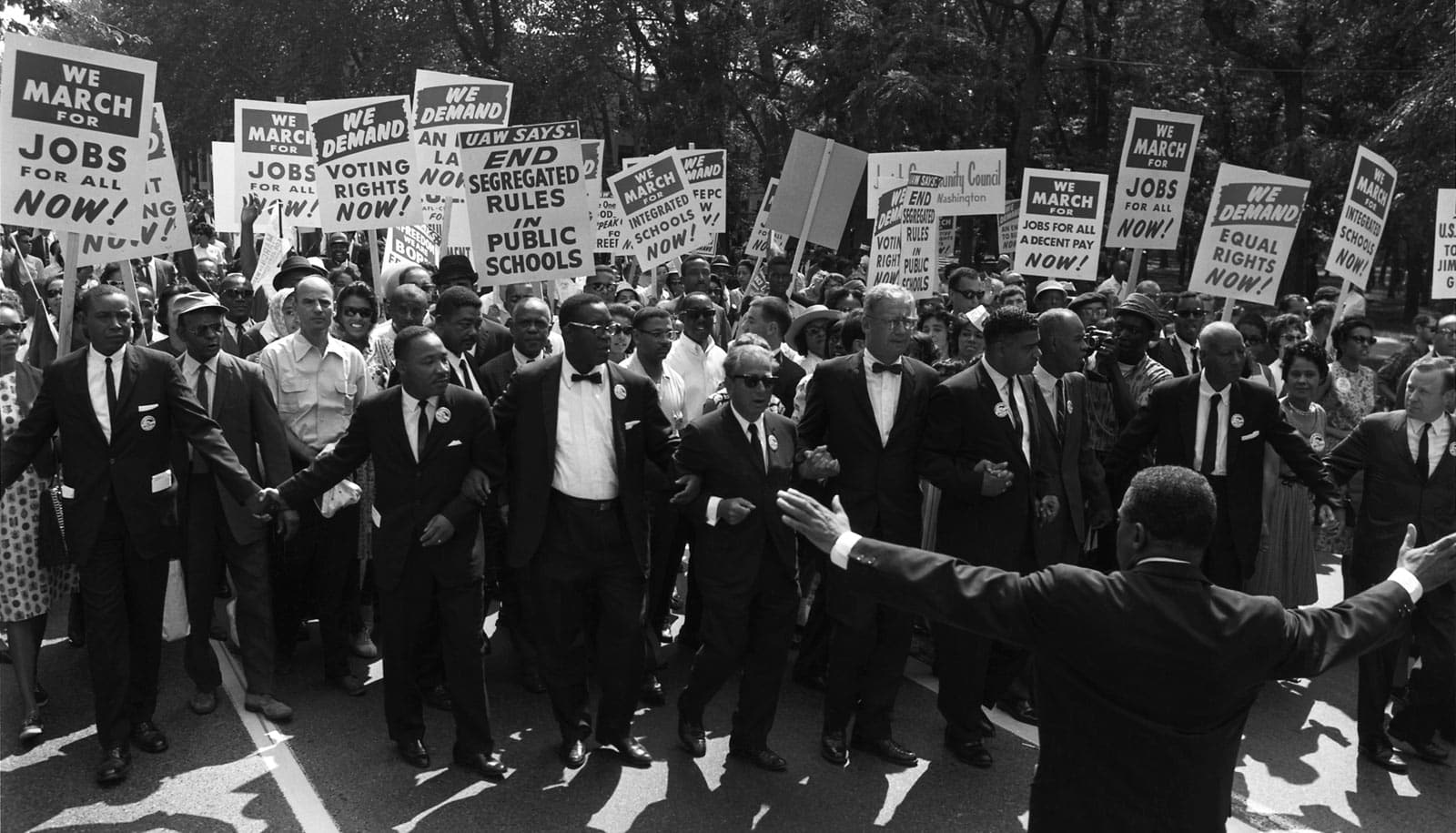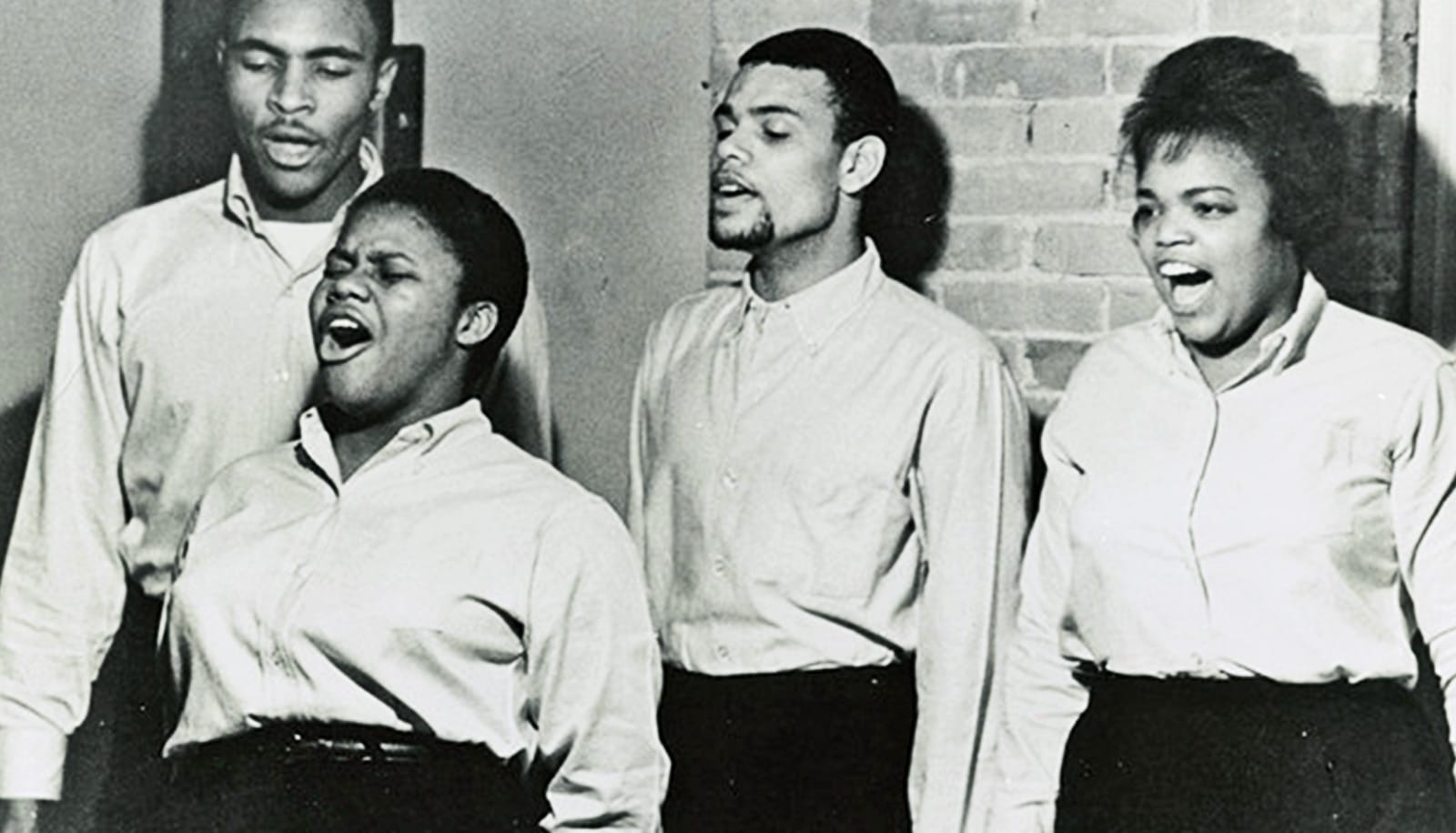Despite the promise that the Civil Rights and Voting Rights Acts once held for American equality, signs of struggle and even regression around rights issues are evident across the United States, a historian explains.
A cursory look at recent headlines tells a disheartening tale. “Segregation Has Been the Story of New York’s Schools for 50 Years”, reports the New York Times. Slate goes one step further: “The Supreme Court May Soon Deal a Final, Fatal Blow to the Voting Rights Act”.
A recent AP poll found that, five decades after the assassination of Martin Luther King Jr., “only 1 in 10 African Americans think the United States has achieved all or most of the goals of the civil rights movement he led.”
Continued challenges have often fed a cycle of stagnation, as enduring obstacles to voter eligibility ultimately diminish representation that might better combat the policies that sustain segregation.
This is of particular concern as the 2020 election season approaches and candidates struggle with the nation’s intense racial polarization, demands of traditionally underrepresented communities, and new immigrants, and a rising tide of white resentment and xenophobia.
Here, Thomas Sugrue, professor of social and cultural analysis and history at New York University, and the author or editor of several books, including Sweet Land of Liberty: The Forgotten Struggle for Civil Rights in the North (Random House, 2008) and Not Even Past: Barack Obama and the Burden of Race (Princeton University Press, 2010), explains how decades of discriminatory practices by real estate developers and banks have hindered minority communities from experiencing equal economic and social growth, and why the military has become a surprise success story of enforcing opportunity for all:
The Civil Rights Act legislation of 1964 was intended, in part, to diminish segregation. What has improved since the signing of this legislation?
I’ll begin with the positive changes. Jim Crow laws in hotels, restaurants, swimming pools, and parks are a thing of the past. African Americans sometimes face suspicion or harassment when they are shopping or dining out, but very few whites today would be outraged if a black person sat near them at a restaurant or slept overnight in the same hotel. Another big change: African Americans now work in jobs that were nearly all white in 1964, including as nurses, salespeople, and college professors.
What has remained unchanged since the bill passed?
Workplace discrimination isn’t a thing of the past. Black workers are still trapped in lower-level jobs and face insecurity in employment, even when they have college or postgraduate degrees. They are still underrepresented in many workplaces, especially in the professions.
In one arena, public education, we have actually experienced backsliding. Civil rights laws and court-ordered integration programs broke down some racial barriers in public education, mostly in the 1960s and 1970s. Since then, however, schools nationwide have resegregated. Today, the most racially divided school systems are not in the South, where the federal courts mandated and enforced school desegregation.
They are in the North, especially in the big metropolitan areas of the Northeast and Midwest. New York tops the list of most racially segregated school systems in the United States. Primary and secondary education in the United States is still separate and unequal.
Your work outlines the historic causes of segregation—ranging from federal homeownership programs, which discouraged lending to nonwhites, to discriminatory practices by real estate brokers. What explains its persistence today?
The housing market offers a depressing example of how the long history of racial exclusion continues to hamper opportunities today. Real estate brokers, landlords, and developers blatantly discriminated against minorities, especially African Americans, through the 1960s, with the backing of the federal government.
The practice of redlining—denying African Americans access to conventional home financing—had devastating effects over time. Blacks were trapped in segregated neighborhoods, denied access to federally-backed mortgages, and confined to places with older, deteriorating housing stock without the capital to make major home improvements.
Beginning in the 1990s and continuing through the 2008 crash, minority neighborhoods faced a double whammy. Exploitative landlords charged high rents, often higher than whites paid for better housing in better-located neighborhoods. Predatory lenders preyed on minority homebuyers’ desire to buy and improve their homes by marketing high-interest, risky loans to them.
Most Americans have one primary source of household wealth—their real estate. But because African Americans—and more recently Latinos—often couldn’t get access to affordable loans and were trapped in inferior housing, they couldn’t build their wealth through homeownership. The result today is a huge wealth gap between whites and everyone else. African Americans and Latinos have about 1/10 the household wealth of whites. And housing remains very segregated.
What do you believe are the consequences of continuing segregation for our nation as a whole?
Continuing segregation affects every dimension of life. People of color are less wealthy and face greater daily stresses in life, which public health researchers have correlated to all sorts of health problems. Racial segregation is strongly correlated with poverty. Investors shy away from neighborhoods with large non-white populations. On the other side, whites have benefited from what the great sociologist Charles Tilly called “opportunity hoarding.”
They have access to better schools, better housing, and better jobs—and have come to believe that those differences reflect their own merit, not the legacy of generations of racial deprivation, predation, and exploitation. Segregation has also played a key role in the ongoing political polarization in the United States, fostering distrust and allowing politicians to rile up their supporters using racial appeals.
Where has there been surprising progress in desegregation?
Perhaps the most surprising changes happened in the armed forces. Until 1948, the military was totally segregated—black troops didn’t share barracks with whites, eat in the same mess halls, or train and fight side-by-side. The military even had racially separate blood banks during World War II.
Today, by contrast, both the leadership and rank and file of the military are very diverse. As a result, interracial marriage rates are higher in communities near military bases than in most of the country. And metropolitan areas with a large military presence are now some of the least segregated in the US.
There is a historical lesson from the desegregation of the military: it took years of grassroots organizing and lobbying by civil rights groups to force change. But even after desegregation was the law, racial barriers didn’t automatically fall. It took military leadership (after some resistance) to use its coercive power to enforce integration. Racial integration took pressure and protest, but also required the power of government to succeed.
What role has immigration in the early 21st century played in these trends?
The relationship between immigration and segregation is complicated. It’s hard to generalize about broad categories of newcomers to the United States. Spanish-speaking immigrants from Latin America and the Caribbean have widely divergent experiences, largely shaped by their skin color and socioeconomic status.
For example, African-descended immigrants (from places like Dominican Republic or Colombia) face high rates of segregation in housing and schools similar to US-born African Americans. Working-class Mexican and Guatemalan immigrants are facing growing rates of segregation, especially in big cities in the Southwest. That said, second and third generation Latinos often intermarry with whites and attend racially diverse schools.
The process isn’t all positive. Studies of Chicago and Los Angeles have shown that many Latin American immigrants distance themselves from African Americans in housing and schooling. The experience of Asian Americans also varies from group to group. Some immigrants, like the Hmong, experience segregation and stigmatization, but others, especially those who come to the US as professionals or who bring with them social, educational, or financial capital, can easily move into white-dominated neighborhoods and send their children to majority white schools. One measure of acceptance is intermarriage. Black-white marriages are more common than they were several decades ago, but still unusual. On the other hand, once marginalized Asian groups—especially Japanese and Chinese Americans—now have very high rates of intermarriage with white Americans.
If segregation is still prevalent—and perhaps even more pronounced—more than 50 years after the Civil Rights Act, what does that say about the efficacy of legislation to address it?
Government can play a major role in addressing segregation. But at the moment, there is little will at the federal, state, or local levels to do so. The Civil Rights Division of the Department of Justice long played a crucial role in enforcing the Civil Rights Act and the Voting Rights Act.
For most of its history, the Civil Rights Division was non-partisan, staffed by career lawyers who were deeply committed to enforcing anti-discrimination laws. But the DOJ has struggled with budget cuts and a shift of priorities away from civil rights enforcement. In the current administration, many career civil rights attorneys are demoralized and many have left. The Department of Housing and Urban Development, under the leadership of Ben Carson, has largely halted efforts to enforce fair housing laws, another major setback for racial equality.
What about at the state and local level?
Most efforts to construct affordable housing and make it available on a non-discriminatory basis, especially in mostly white suburbs, have been defeated by NIMBY—”not in my backyard”— activists. And efforts to desegregate public schools meet with fierce opposition, mostly from white parents, who have mostly left racially mixed districts.
Even in ostensibly liberal big cities—New York City is a perfect example—white parents have staunchly opposed reforms that would change primary school attendance zones to create more racial diversity and have fought to preserve in-school tracking and testing policies that disadvantage African American and Latino children. Many state legislators, mayors, and city council or school board members are afraid that if they push desegregation efforts they will touch a “third rail” of politics by alienating their white constituents.
What’s the single most important step we could take to ending discrimination?
We need to build political will to achieve the goal of racial equality. That requires enforcing the laws, but also using the tools of public policy—from building more affordable housing to rethinking public education—to accomplish change.
As a historian of civil rights, I argue that the biggest gains happened when activists protested, threatened disruption, went to the courts, and put pressure on elected officials. One of the bright spots in our dark political moment is that public support for racial justice is on the rise. Despite deep anti-immigrant sentiment, a majority of Americans believe that immigration has been a positive force in the United States.
But it will take more than good will to finish the unfinished business of the civil rights era. It will take activism and mobilization just as it did in the past. Positive change, especially when it comes to race, has never come easily.
Source: NYU



